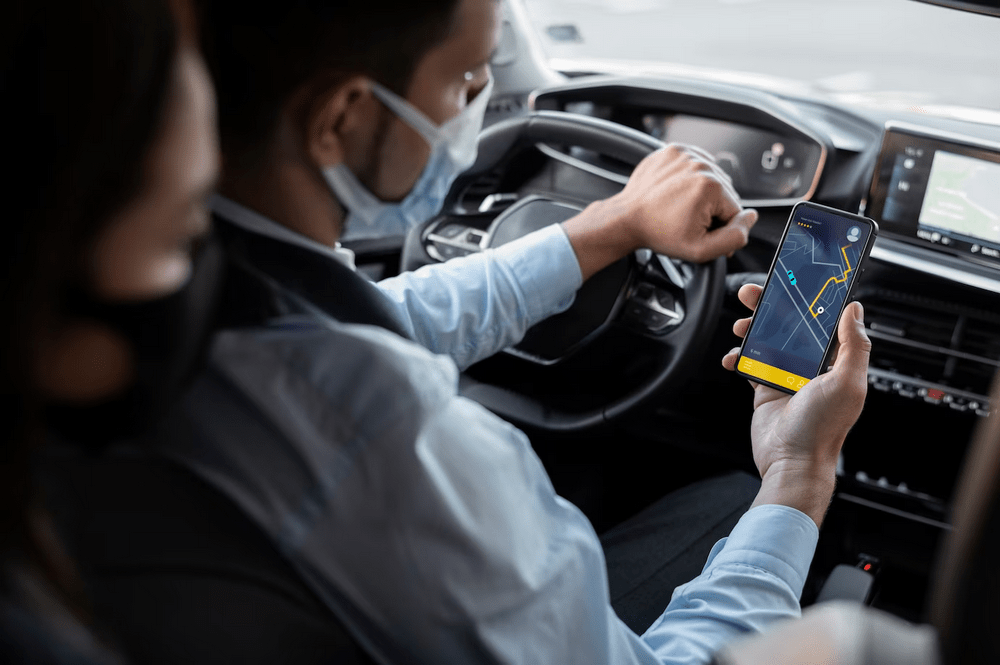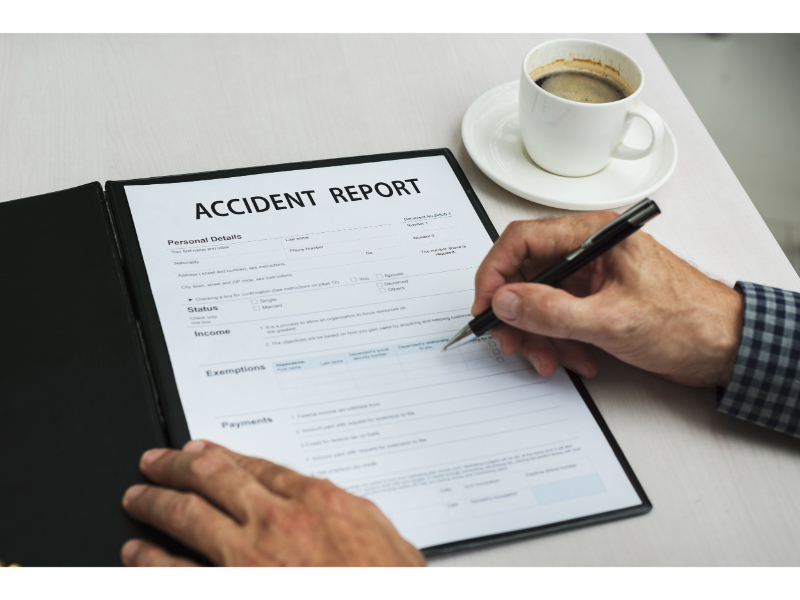With the rise of ride-sharing services, Uber and Lyft have become increasingly popular over the past decade. These companies allow users to request a ride from a driver via a smartphone application. Despite the convenience of this service, Uber and Lyft drivers may be involved in accidents that can cause serious injury and damage to passengers and other motorists.
It is important for victims of these accidents to understand their rights and the legal process for filing a claim. This section provides an overview of Uber and Lyft accident claims, including common causes, filing a claim, and the process for negotiating a settlement or taking legal action.
Understanding Uber and Lyft Accident Law
Rideshare insurance policies are an important factor when determining liability in rideshare accidents.
Many rideshare companies have their own policies that provide coverage for certain types of accidents, such as those involving third-party drivers or passengers.
Additionally, some states have enacted laws that require rideshare companies to provide specific minimum coverage for drivers and passengers.
Understanding these policies and laws is key to determining liability in the event of an accident.
The Role of Rideshare Insurance Policies
The role of rideshare insurance policies in the context of transportation services is an important consideration.
Rideshare insurance is a type of insurance that covers drivers and passengers of ride-hailing services such as Uber and Lyft.
Rideshare insurance policies are designed to fill the gap between traditional auto insurance policies and the coverage provided by the ride-sharing companies.
These policies provide liability coverage for drivers in case of an accident that is not covered by the ride-sharing company’s policy.
In some cases, rideshare insurance policies are required by law, and they can also be used to supplement a driver’s existing auto insurance policy.
Additionally, riders can purchase additional coverage if they feel their ride-sharing company’s coverage is inadequate.
Rideshare insurance policies can be purchased through the ride-sharing company, or from a third-party provider.
They typically offer a variety of coverage levels, including liability, collision, and comprehensive coverage.
It is important for both drivers and riders to understand the details of the policy they are buying before purchasing it.
Determining Liability in Rideshare Accidents
When it comes to transportation services, determining liability in the event of an incident can be a complex process. This is especially true for rideshare services, such as Uber and Lyft, due to the nature of their business models.
For example, there are often multiple parties involved—the driver, the passenger, the rideshare company, and any other drivers or pedestrians on the road—all of whom may be partially or fully liable for an accident. In order to determine who is responsible, an investigation of the incident is typically required.
In the case of an Uber or Lyft accident, the investigation typically begins with the rideshare company. They will evaluate the circumstances of the accident, such as the driver’s records and driving history, the vehicle involved, and any other relevant information. From there, they may determine that the driver, the company, the passenger, or a combination of them is liable.
As such, accident victims may be able to seek compensation from the responsible parties. It is important to note, however, that the rideshare company’s insurance policy may limit their liability. As such, victims may need to also pursue legal action in order to seek the full amount of compensation they are entitled to.
Gathering Evidence After a Ride-Sharing Accident
An unfortunate consequence of ride-sharing services is the potential for accidents, and it is important to be aware of the steps to take after an incident to ensure a successful claim.
Gathering evidence is an integral part of the process, with the most important evidence being the police report. It is necessary to report the accident to the police as soon as possible, and the report should include witness statements, photographs of the vehicles involved, and any other relevant details.
It is also important to obtain medical documentation of any injuries sustained during the accident, as this will help to prove damages resulting from the incident.
Besides, keeping a record of any correspondence between the ride-sharing company and the victims, as well as any communication with the insurance company is crucial. This includes records of any payments or settlements made in relation to the accident.
In addition, any repairs or medical bills incurred should also be documented and kept in order to provide evidence of damages.
The evidence gathered should be used to support the claim that the ride-sharing company is liable for the accident, and to prove the extent of the damages incurred.

Filing an Uber or Lyft Accident Claim
When filing an Uber or Lyft accident claim, it is important to report the incident to the rideshare company as soon as possible.
Additionally, it is important to file a claim with relevant insurance providers, such as the driver’s personal car insurance policy, the rideshare company’s commercial insurance policy, and the driver’s livery insurance policy.
Lastly, if there are any witnesses of the accident, it is important to obtain their contact information to ensure their version of the events can be documented for the claim.
Reporting the Accident to the Rideshare Company
Following an incident, reporting the details to the rideshare company is a critical step in the process. It is important to provide all relevant information to the rideshare company in order to ensure that the claim is accurately documented.
This information should include details such as the date, time, and location of the incident, as well as the contact information of any individuals involved. Additionally, photos of the scene can be included to provide supplemental evidence.
Once the rideshare company has received the report, they will take steps to investigate the incident and determine an outcome. This process can take some time, as the rideshare company needs to review the information and evidence provided.
During this time, the rideshare company may reach out to the parties involved for additional information or clarification. It is important to be patient and provide any requested information in order to facilitate the claims process.
Filing a Claim with Relevant Insurance Providers
After a rideshare incident has been reported to the relevant company, the next step is to file a claim with any applicable insurance providers.
This is important in order to ensure that any damages or injuries that were caused by the incident can be properly addressed and compensated.
Depending on the type of incident and the insurance coverage of all parties involved, the claims process can vary significantly.
For example, if the incident involves a driver who is uninsured, the passenger may have to file a claim with their own insurance provider.
In other cases, the driver’s insurance may cover the damages, and the passenger may have to file a claim with the insurance company.
Additionally, the rideshare company may have additional insurance coverage that applies to certain situations.
It is important for passengers to understand what coverage is available to them, as well as the requirements for filing a claim.
Common Causes of Uber and Lyft Accidents
Distracted driving has become a growing concern in the ridesharing industry. Uber and Lyft drivers have been found to be more likely to text, use their phones, and be distracted by other passengers in comparison to other types of drivers.
Speeding and reckless driving have been identified as contributing factors to the increased incidence of Uber and Lyft accidents, as drivers may be in a hurry or be unaware of their speed in order to make more rides.
Inadequate vehicle maintenance has also been identified as a common cause of Uber and Lyft accidents, as vehicles may not be regularly inspected or maintained, leading to mechanical defects or safety issues.
Distracted Driving
By analyzing the prevalence of distracted driving, one can gain a deeper understanding of the risks posed by motor vehicle use.
Distracted driving is a major factor in motor vehicle accidents, and is responsible for an increasing number of deaths and serious injuries each year.
It is defined as any action that diverts a driver’s attention away from the road, such as texting, talking on the phone, and eating.
It is particularly dangerous when driving for companies such as Uber and Lyft, as these drivers often have to multitask in order to provide their services.
Distracted driving is a major cause of Uber and Lyft accidents.
As drivers of these companies are often multitasking in order to provide their services, they are more likely to become distracted while driving.
This can lead to dangerous situations, such as failing to yield the right of way or not noticing pedestrians or other vehicles on the road.
Furthermore, many passengers and drivers are not aware of the risks of distracted driving, making them more likely to engage in it.
For these reasons, it is important for both drivers and passengers to be aware of the dangers posed by distracted driving and take steps to reduce their risk of being involved in an accident.

Speeding and Reckless Driving
Speeding and reckless driving are both behaviors that significantly increase the risk of motor vehicle collisions, leading to serious injury and even death.
Both of these dangerous behaviors stem from the same root: impatience and an unwillingness to follow the rules of the road.
Speeding is the act of driving faster than the posted speed limit, while reckless driving is operating a vehicle in a way that is considered to be careless or dangerous.
Common examples of reckless driving include driving while intoxicated or under the influence of drugs, running red lights, failing to yield, and weaving in and out of traffic.
The consequences of speeding and reckless driving can be severe. When a driver is found to be at fault in a collision, they can be held liable for any damages or injuries suffered by the other driver.
As such, Uber and Lyft drivers should always drive at a safe speed, obey all traffic laws, and be aware of their surroundings at all times. Accidents can be avoided by following the rules of the road and driving responsibly.
Inadequate Vehicle Maintenance
Neglecting to properly maintain a vehicle can lead to a variety of dangerous mechanical or structural issues, potentially putting drivers and others on the road at risk. For Uber and Lyft drivers, the consequences of inadequate vehicle maintenance can be particularly dire, as they are often transporting passengers to their destination.
Common issues that can arise from a lack of proper maintenance include:
- Worn or defective brakes
- Loose or damaged steering components
- Failing engine components
- Worn tires or wheels
In many cases, these issues can be avoided with regular preventative maintenance, such as oil changes, tire rotations, or brake inspections. However, when these maintenance procedures are neglected, the risks increase significantly.
Poorly maintained vehicles can lead to an increased risk of accidents, as well as more serious consequences such as property damage, bodily injury, or even death. For this reason, it is essential that Uber and Lyft drivers take the necessary steps to ensure that their vehicles are well-maintained and in safe operating condition.
Negotiating a Settlement
When attempting to resolve an unresolved dispute concerning a vehicular incident, it is essential to consider the possibility of negotiating a settlement. Negotiating a settlement can be a beneficial outcome for both parties involved, as it allows them to avoid a lengthy court case and offers the potential to reach a mutually agreeable solution. The process of negotiating a settlement involves a careful consideration of the facts of the case and the various elements that will be taken into account by the courts.
The primary elements to consider when negotiating a settlement are the amount of damages sought, the degree of fault, the amount of compensation offered, and the availability of insurance coverage. These elements are essential for both sides to understand in order to reach an agreement. Additionally, it is important to note that the amount of damages sought and the degree of fault may be different from the amount of compensation offered.
| Element | Description |
| Damages Sought | The amount of damages being sought by one party. |
| Degree of Fault | Determining who was at fault for the accident and the extent of their responsibility. |
| Amount of Compensation Offered | The amount of money being offered by one party to resolve the dispute. |
| Insurance Coverage | Whether or not the party at fault has sufficient insurance coverage for the damages. |
Taking Legal Action for a Ride-sharing Accident
Having attempted to negotiate a settlement for an Uber or Lyft accident, it may be necessary to take legal action if a satisfactory agreement cannot be reached. Legal action can be a lengthy and costly process, and it is important to consider the merits of pursuing such a course of action before proceeding.
There are several legal options available to those involved in an Uber or Lyft accident.
The first step in taking legal action is to determine whether the incident is eligible for a civil lawsuit. In most cases, a personal injury claim can be made against the other driver’s insurance policy. However, if the driver is not covered by an insurance policy, or if the policy does not provide sufficient coverage, it may be possible to make a claim against Uber or Lyft’s insurance policy. Additionally, if the accident was caused by a defective vehicle or part, an individual may be able to make a product liability claim against the manufacturer.
In some cases, it may be necessary to file a lawsuit to recover damages. Before doing so, it is important to consider the costs associated with a lawsuit, the likelihood of success, and the potential risks involved. It is also important to understand the state’s statute of limitations for filing a lawsuit, as this can vary by state.
If a lawsuit is filed, it is important to have a thorough understanding of the legal process, including the discovery phase, pretrial motions, and trial preparation. Additionally, individuals should be aware of the potential defenses that may be raised in a lawsuit and the potential compensation that may be available.
Conclusion
In the event of an Uber or Lyft accident, individuals must take the necessary steps to ensure they have all the evidence needed to file a claim.
This includes gathering evidence, filing a claim, negotiating a settlement, and potentially taking legal action.
It is important to also be aware of the common causes of Uber and Lyft accidents to ensure safe rideshare experiences.
By understanding the law and taking the appropriate steps, individuals can be prepared to make a successful Uber or Lyft accident claim and seek the justice they deserve.
Choosing a ridesharing accident lawyer is an important decision. It can be challenging to determine which attorney is the most suitable for your case, but there are essential questions to ask when evaluating a lawyer. Ensure that you select an experienced attorney who is well-versed in local laws and regulations, and maintains accessibility and professionalism. If you require legal assistance, reach out to 1-800-ASK-GARY for top-notch support.


